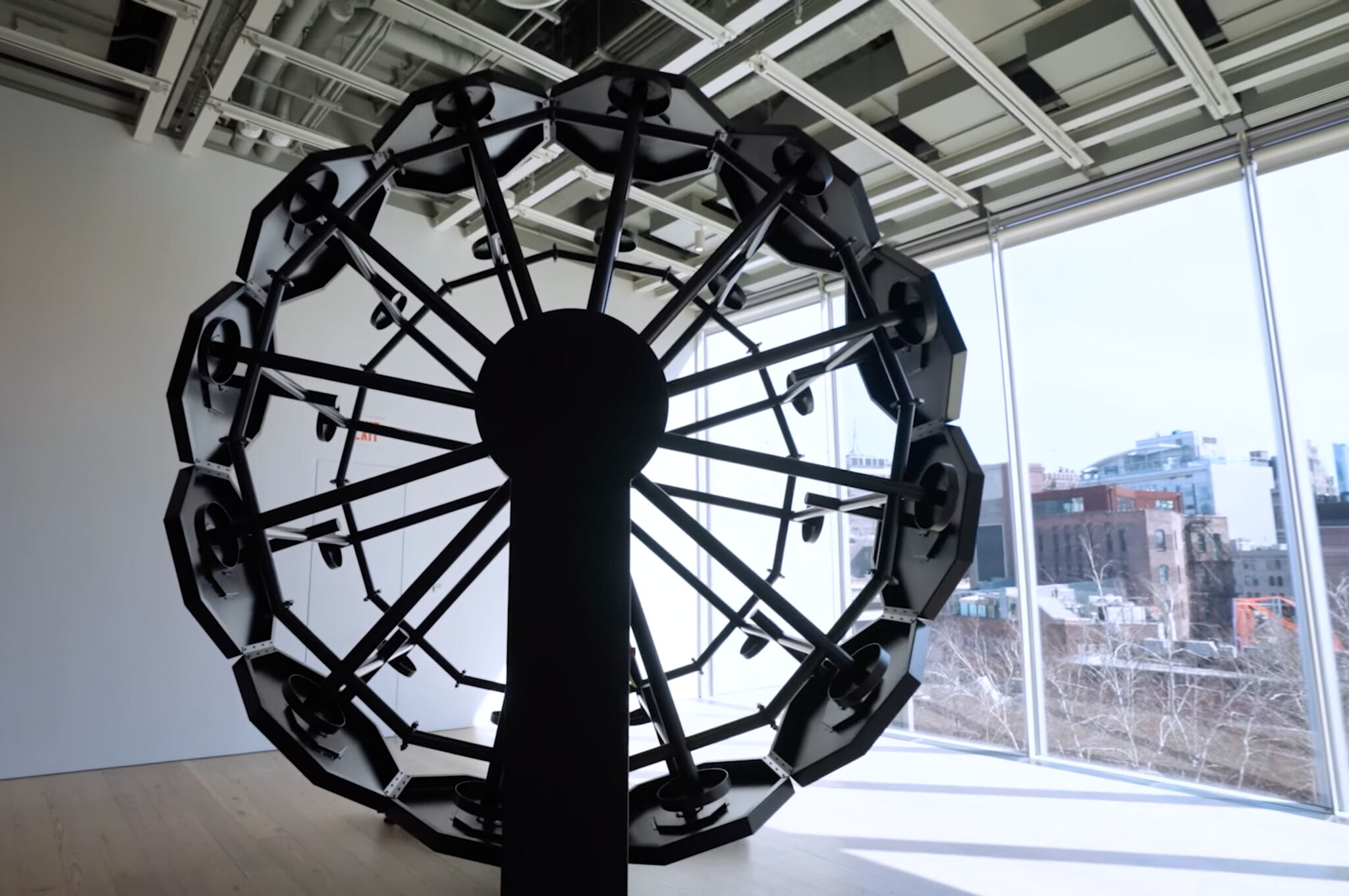Whitney Biennial 2022: Quiet as It’s Kept | Art & Artists
Apr 6–Oct 16, 2022
Whitney Biennial 2022: Quiet as It’s Kept | Art & Artists
Sable Elyse Smith
55
Floor 5
Born 1986 in Los Angeles, CA
Lives in New York, NY
Sable Elyse Smith has described the sculpture on view here, which takes the form of a Ferris wheel, as a “clockwork.” Moving slowly but constantly, it renders the passage of time palpable, visceral, even painful. The work, she has written, is “a physical monument to our entanglement of violence and entertainment. This [is] violence I’m tracing at the scale of intimacy, at the scale of language, and the scale of infrastructure.” Smith constructed the sculpture using furniture designed for prison visiting rooms, such as low tables that allow for easy surveillance by leaving sitters’ bodies and movements exposed. The accompanying video is largely drawn from a television show called Live PD that aired broadcasts of police patrols in real time and underscores the ways that the entertainment industry and institutionalized violence mutually reinforce each other.
A Clockwork, 2021
-
0:00
Sable Elyse Smith, A Clockwork
0:00
Narrator: Sable Elyse Smith.
Sable Elyse Smith: I’ve always been interested in invisibility, things that are just barely legible or sort of perceptible and trying to point at objects that have a kind of ambiguity in them potentially like upon first encounter, but are inherently violent and a part of perpetuating these sort of oppressive or violent systems.
This one is configured to look like a Ferris wheel. There is this really extreme and intense relationship between entertainment and violence.
Narrator: By referencing a Ferris wheel, the artist evokes places where, beneath the sheen of carefree fun, there are unacknowledged systems of protocols, rules, and rituals. Smith is interested in locations where, in her words, “we agree to suspend our sense of morality . . . hopscotching from harm to pleasure.”
Sable Elyse Smith: We can go to a traveling carnival and consume and witness human beings that we deem different or that we other, participating or fighting or doing anything to each other. And that could be a source of entertainment, whereas if we’re outside of the framework of the carnival or a show or whatever it is, then that behavior or consuming that wouldn’t be permissible.
Narrator: This slowly-rotating sculpture brings to the fore other social environments as well, ones with similarly concealed social contracts. Making up the wheel-like shape are tables and chairs designed for a range of municipal spaces, and particularly prison visiting rooms.
Sable Elyse Smith: All of the decisions about the design of the furniture are about power and surveillance. So the height of the tables is just at your knee so that it distracts from and also it’s difficult to pass things under the table for example. So that’s one way where there’s a specific mechanism of power embedded into the object that it is like upon first glance or if you don’t have experience with, it seems neutral. It seems like it’s just a piece of furniture, how bad could it be? Or how could this object just be considered violent or have a kind of action and impact in a space?

